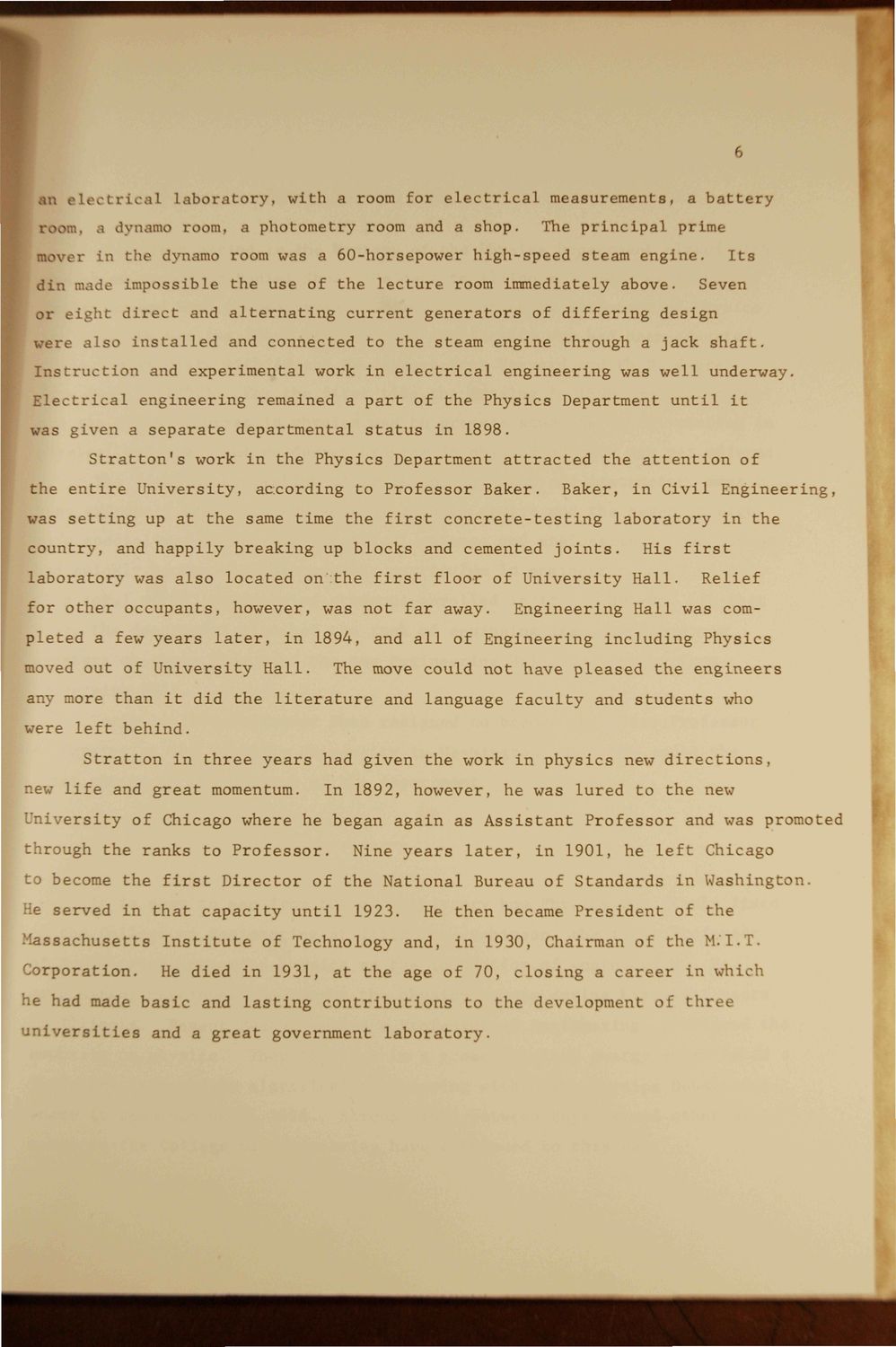Caption: Book - Century of Physics (1973)
This is a reduced-resolution page image for fast online browsing.

EXTRACTED TEXT FROM PAGE:
6 an electrical laboratory, with a room for electrical measurements, a battery room, a dynamo room, a photometry room and a shop. The principal prime Its Seven mover in the dynamo room was a 60-horsepower high-speed steam engine. din made impossible the use of the lecture room immediately above. or eight direct and alternating current generators of differing design were also installed and connected to the steam engine through a jack shaft. | Instruction and experimental work in electrical engineering was well underway. Electrical engineering remained a part of the Physics Department until it was given a separate departmental status in 1898. Stratton's work in the Physics Department attracted the attention of the entire University, according to Professor Baker. Baker, in Civil Engineering, was setting up at the same time the first concrete-testing laboratory in the country, and happily breaking up blocks and cemented joints. His first Relief laboratory was also located on the first floor of University Hall. for other occupants, however, was not far away. Engineering Hall was com- pleted a few years later, in 1894, and all of Engineering including Physics moved out of University Hall. The move could not have pleased the engineers any more than it did the literature and language faculty and students who were left behind. Stratton in three years had given the work in physics new directions, new life and great momentum. In 1892, however, he was lured to the new niversity of Chicago where he began again as Assistant Professor and was promoted through the ranks to Professor. Nine years later, in 1901, he left Chicago to become the first Director of the National Bureau of Standards in Washington. He served in that capacity until 1923. He then became President of the Massachusetts Institute of Technology and, in 1930, Chairman of the M.I.T. Corporation. He died in 1931, at the age of 70, closing a career in which he had made basic and lasting contributions to the development of three universities and a great government laboratory.
|